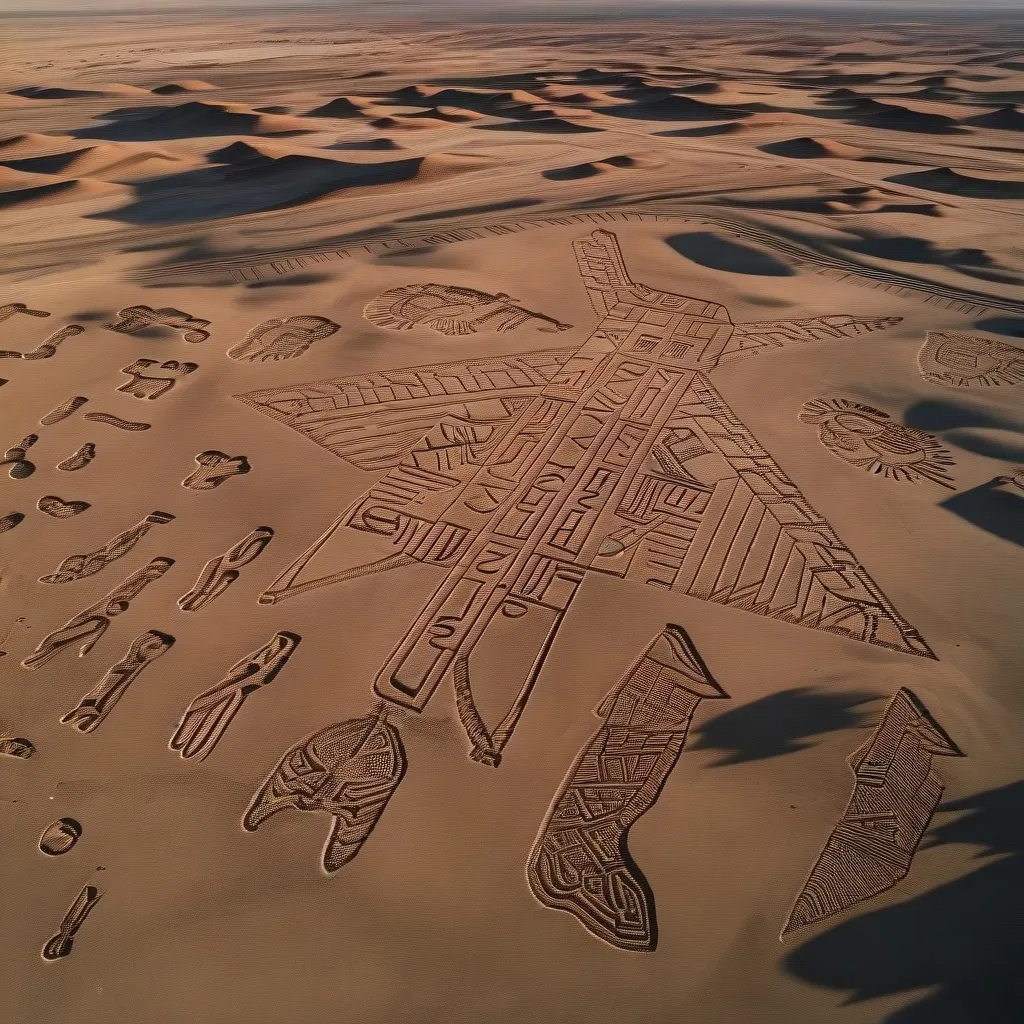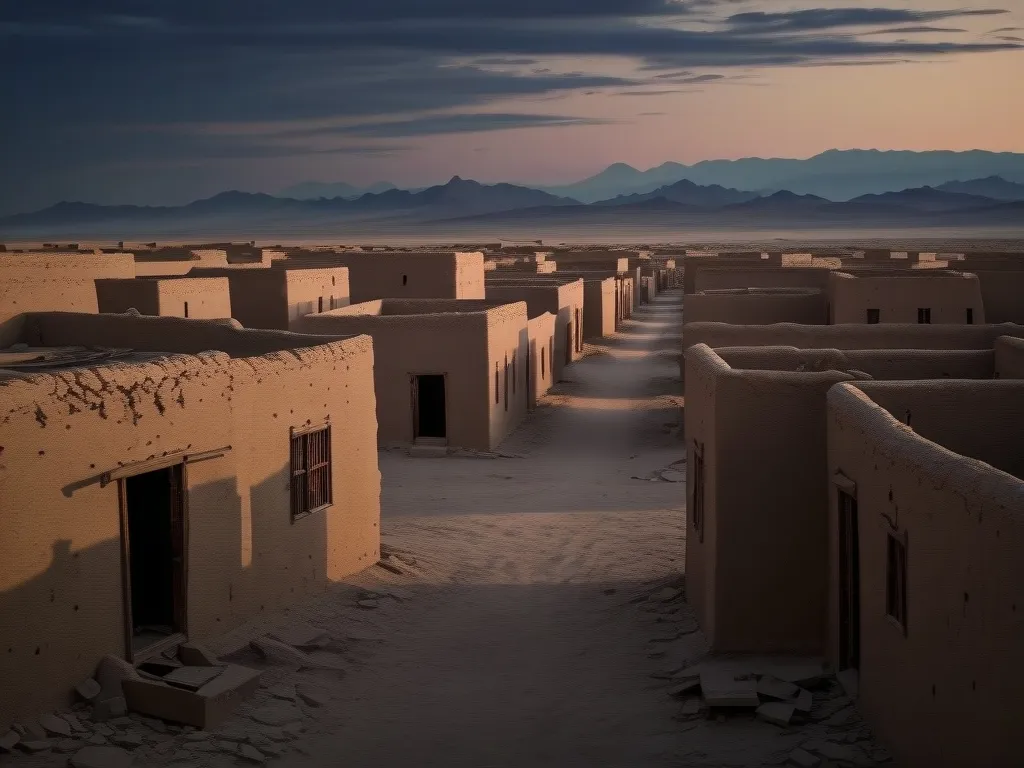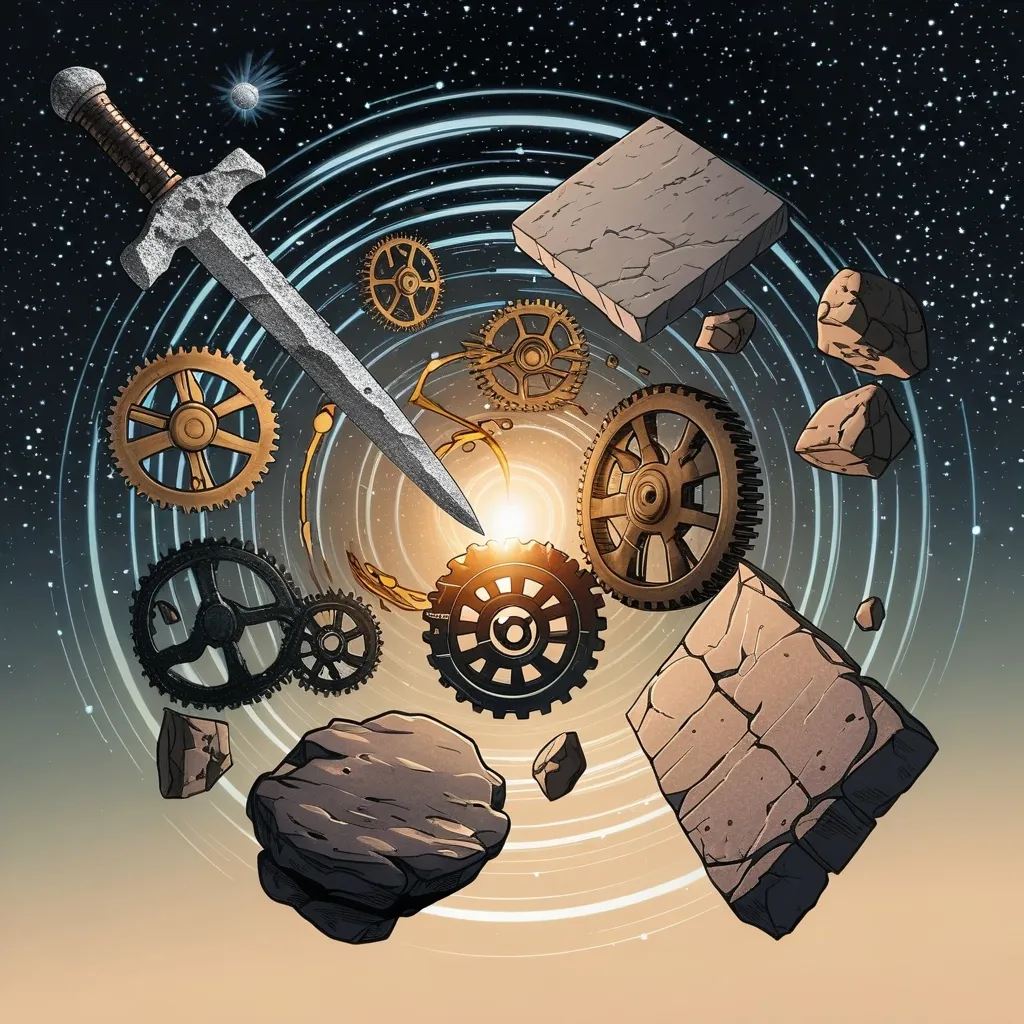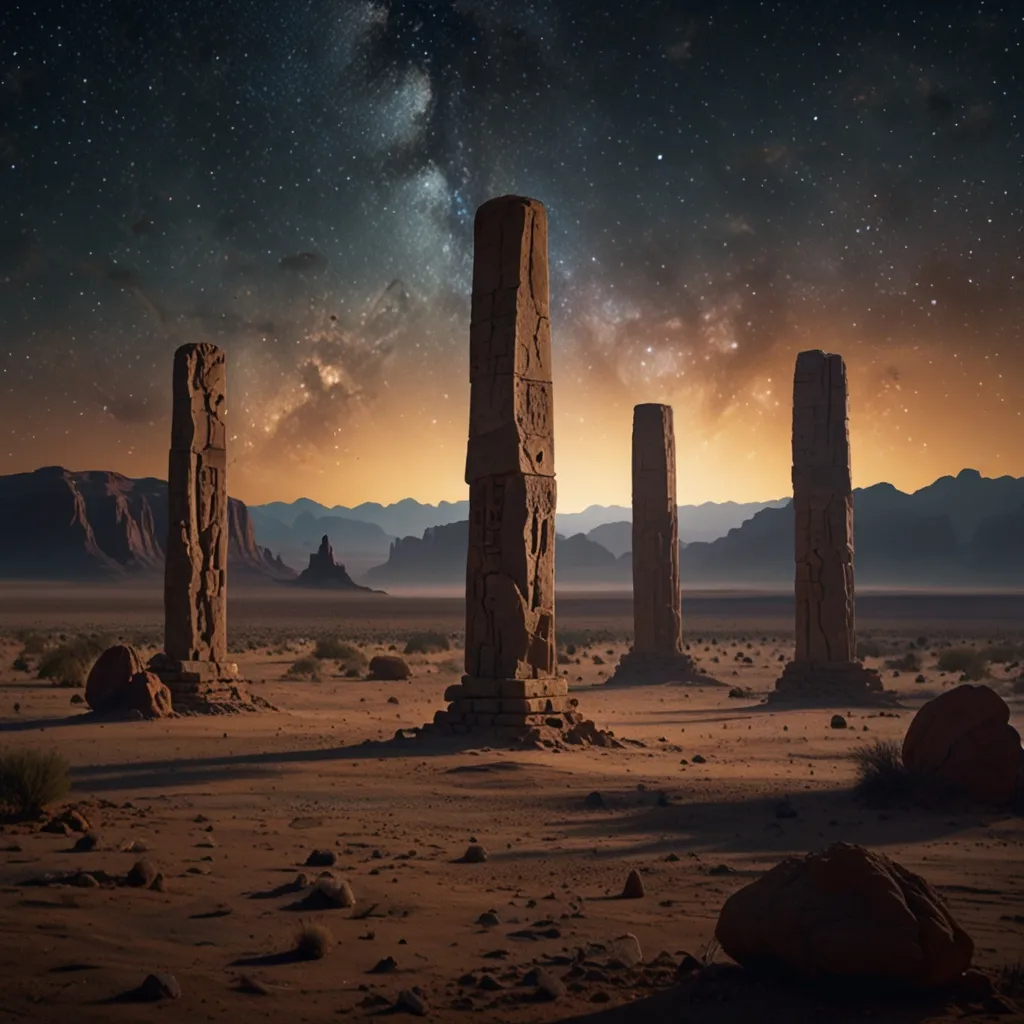The Enigmatic Nazca Lines: A Desert’s Ancient Secrets
Imagine standing in the middle of a vast, arid desert, surrounded by nothing but sand and rock as far as the eye can see. Now, picture massive designs etched into the ground beneath your feet, stretching for hundreds of meters in every direction. Welcome to the mysterious world of the Nazca Lines.
These incredible geoglyphs, located in southern Peru’s Nazca Desert, have puzzled and amazed people for centuries. They’re not just random scribbles in the sand – we’re talking about intricate designs of animals, plants, and geometric shapes so large that you can only fully appreciate them from the air. It’s like ancient graffiti on a cosmic scale!
So, who were the artistic geniuses behind these massive doodles? Well, it turns out they were created by the Nazca culture, a group of people who lived in the area from about 200 BC to 500 AD. These folks weren’t just talented artists; they were also pretty smart cookies when it came to working with what they had.
The Nazca Desert is one of the driest places on Earth. I’m talking about a place that gets about 20 minutes of rain per year. That’s less time than it takes to watch your favorite sitcom! But this lack of rain is actually what’s helped preserve the lines for so long. It’s like nature’s own preservation system.
Creating these lines wasn’t just a matter of grabbing a giant pencil and going to town. The Nazca people had to get creative. They removed the darker top layer of soil to reveal the lighter soil underneath, creating a contrast that made the designs pop. It’s like they were working with a giant Etch A Sketch!
Now, you might be wondering how these lines were discovered in the first place. After all, they’re not exactly easy to spot when you’re standing right on top of them. The Spanish conquistador Pedro Cieza de León mentioned them way back in the 16th century, but it wasn’t until the 1920s that people really started paying attention.
A Peruvian archaeologist named Toribio Mejía Xesspe was the first to study the lines on foot in 1927. But the real game-changer came with the invention of airplanes. Suddenly, people could see these massive designs in all their glory from above. It must have been like discovering a hidden message from the past written in giant letters.
But here’s the million-dollar question: why did the Nazca people create these enormous designs? Well, there are almost as many theories as there are lines in the desert!
One popular idea is that the lines were part of ancient rain rituals. Remember how dry the Nazca Desert is? Well, water would have been pretty darn important to the people living there. Many of the designs show animals and plants associated with water, which supports this theory. It’s like they were sending a giant “Please send rain!” message to the sky gods.
Another theory suggests that the lines were a sort of ancient astronomical calendar. Some researchers noticed that certain lines lined up with where the sun and other celestial bodies rose on important dates. It’s like the Nazca people created their own giant star chart right on the ground!
There’s also the idea that these lines were sacred walkways. Imagine following these paths as part of a religious ceremony, offering your devotion to the mountain gods who were believed to control the water supply. It’s like a spiritual pilgrimage, but with really cool ground art.
Of course, there are also some… let’s say, more creative theories out there. One of the most famous (or infamous) is the idea that the lines were landing strips for alien spaceships. While this theory might make for a great sci-fi movie plot, most archaeologists aren’t buying it. Sorry, alien enthusiasts!
More recent studies have suggested that the lines might have been an ancient form of communication, marking routes between settlements and valleys. It’s like an early version of Google Maps, but way more artistic.
Despite all these theories, the true purpose of the Nazca Lines remains a mystery. But you know what? That’s part of what makes them so fascinating. They’re like a giant puzzle left for us to solve, inviting us to imagine what life was like for the people who created them.
The preservation of these amazing designs is a constant concern. While the dry climate has helped protect them for centuries, they’re not invincible. In 2009, heavy rains damaged one of the designs, and in 2018, a truck driver accidentally drove over part of the lines. It just goes to show how fragile these ancient wonders can be.
As we continue to study and protect the Nazca Lines, we’re not just preserving some cool designs in the desert. We’re safeguarding a window into the past, a glimpse into the minds and lives of people who lived thousands of years ago. These lines remind us of the incredible creativity and ingenuity of our ancestors, and how much we still have to learn from them.
So, the next time you’re feeling uninspired, just remember: there’s a group of ancient artists who created masterpieces so large you need to be in an airplane to see them properly. Now that’s thinking big!
The Nazca Lines stand as a testament to human creativity, spirituality, and our endless fascination with the world around us. They’re a reminder that sometimes, the most incredible things can be found in the most unexpected places – even etched into the floor of a desert. Who knows what other secrets are out there, just waiting to be discovered?






